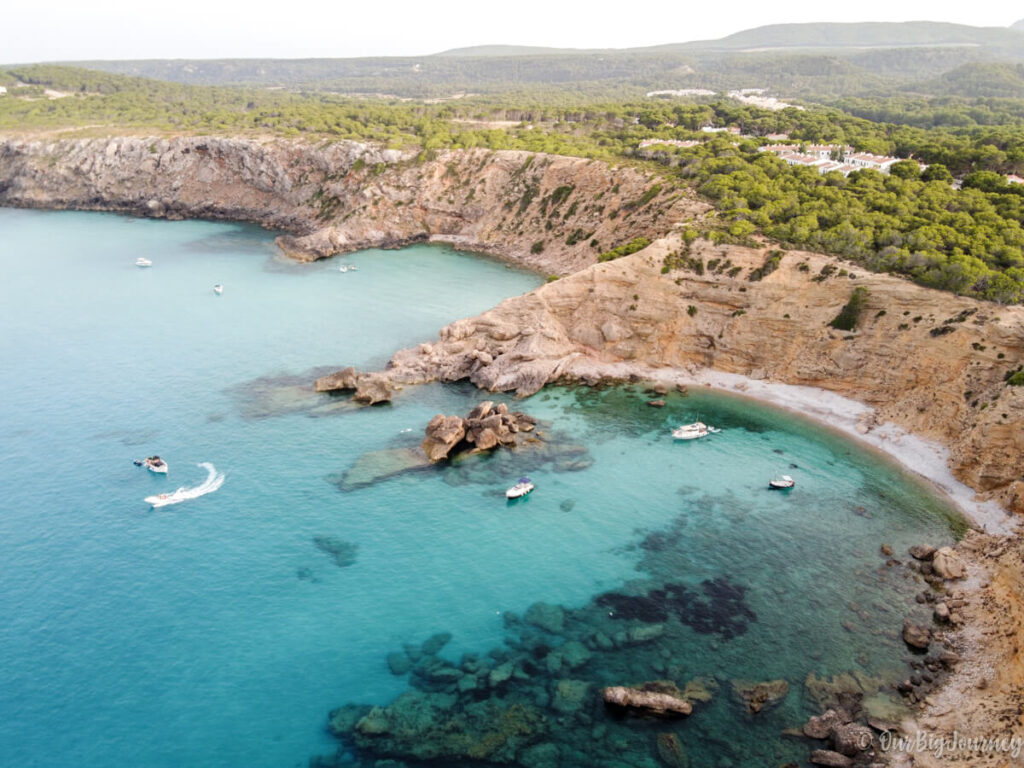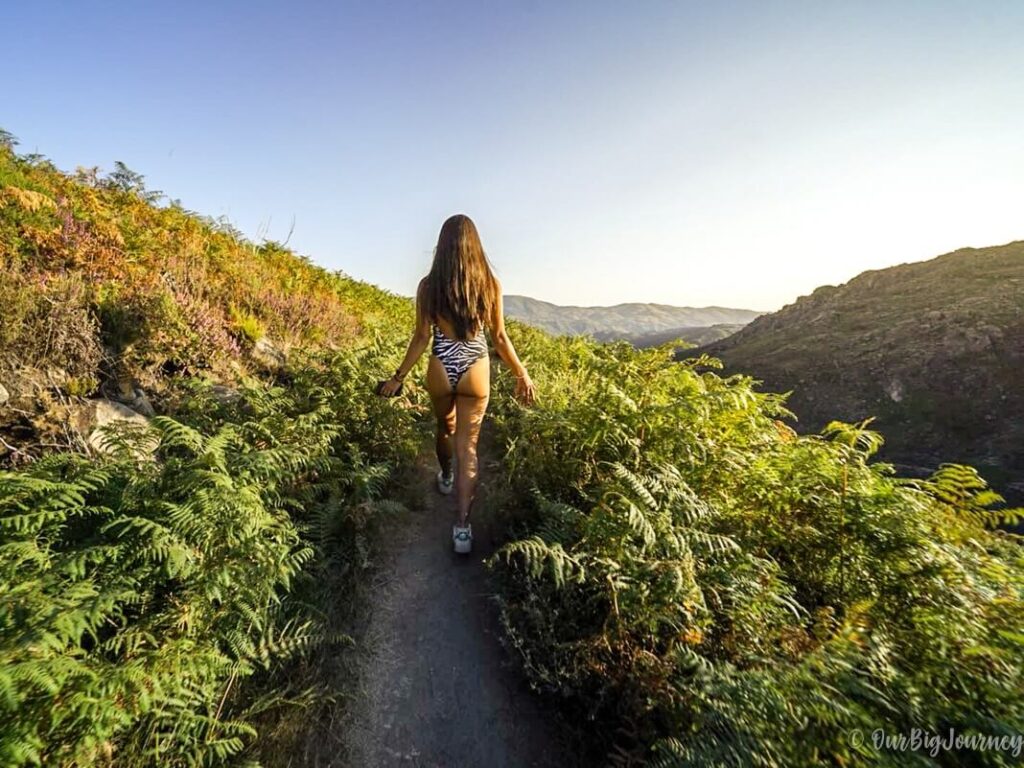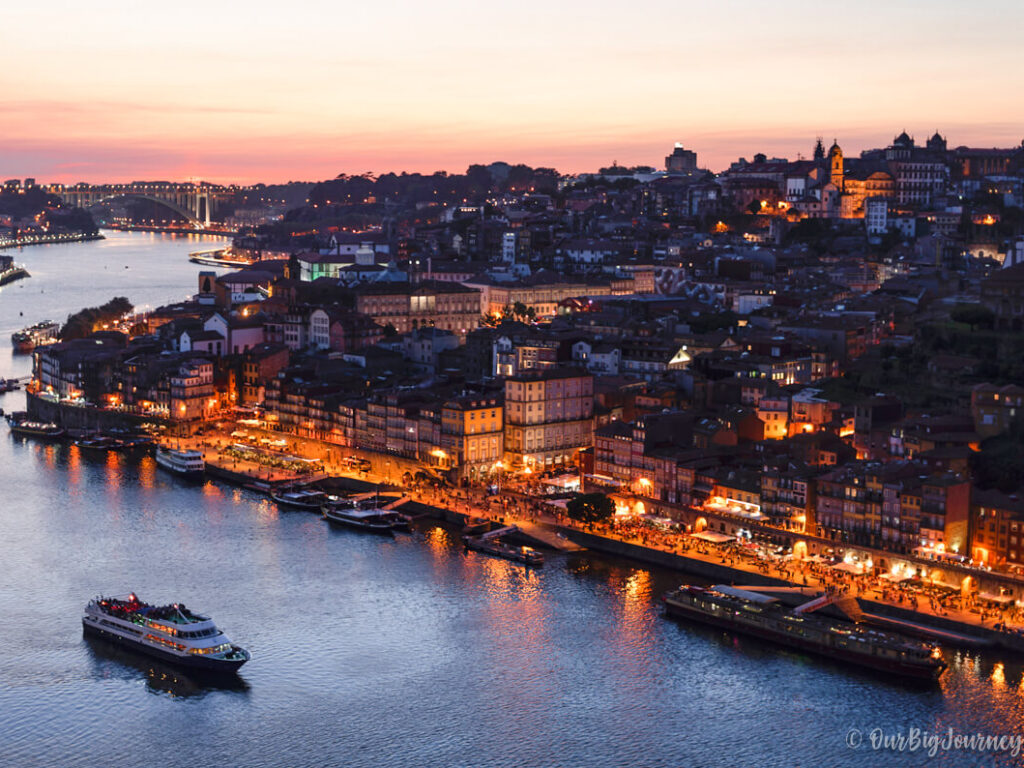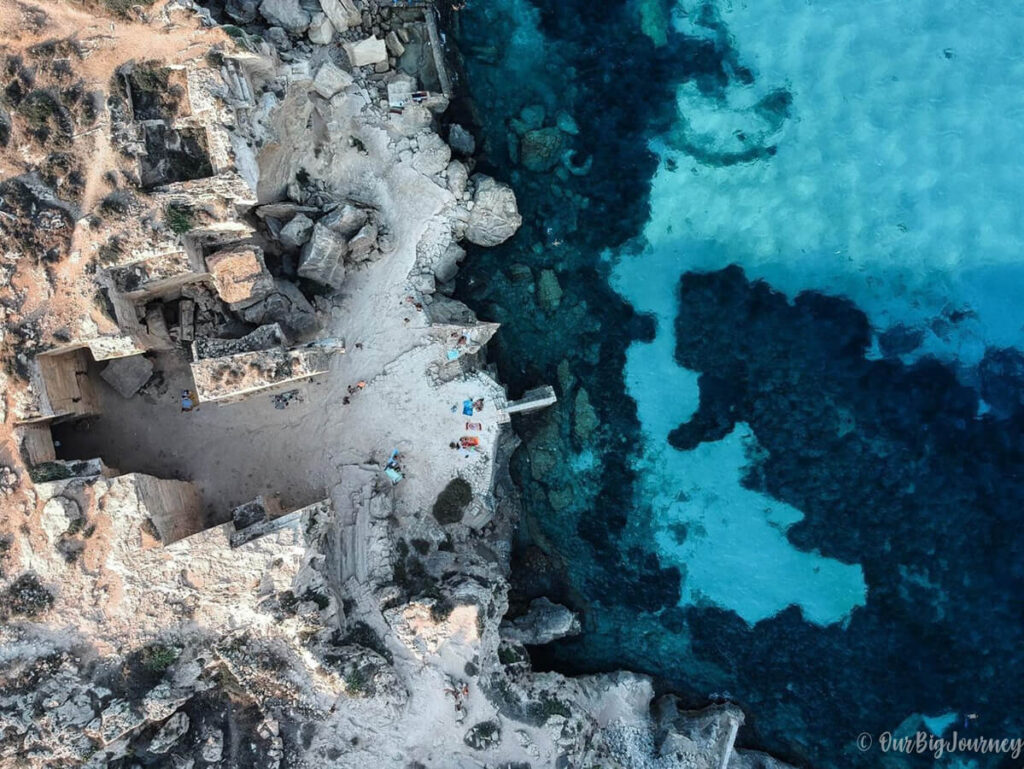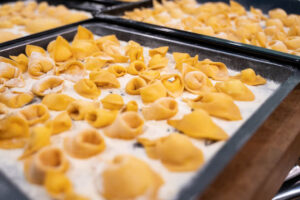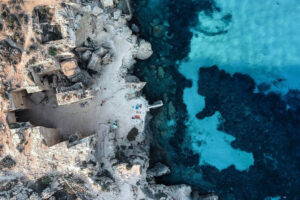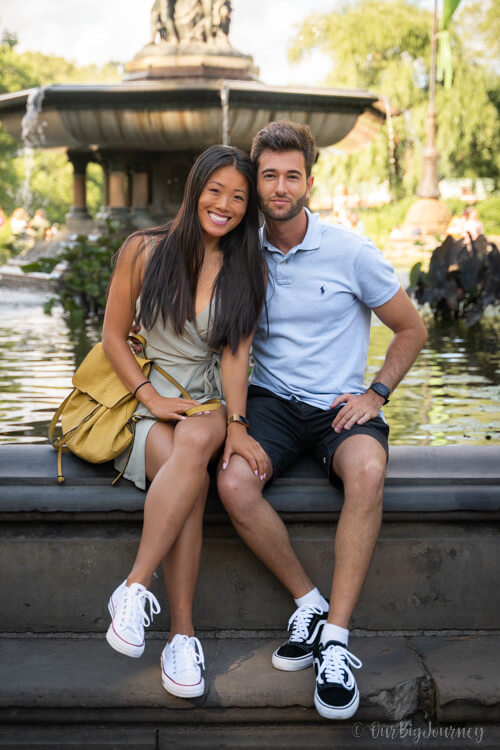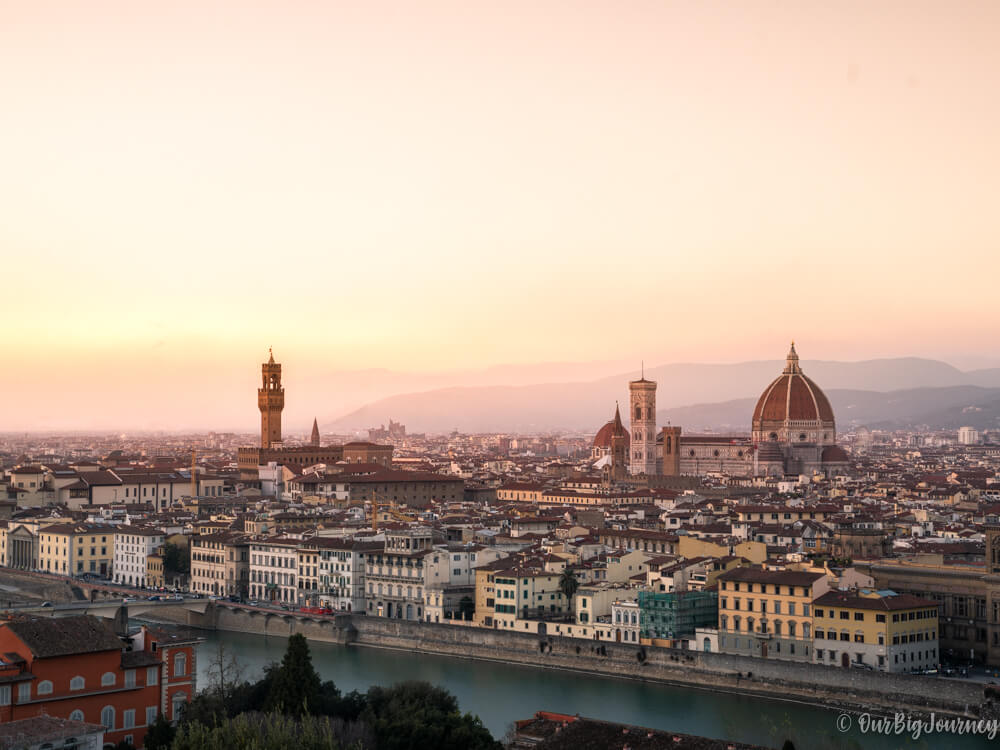
What not to Miss in Florence
By Ellen (Updated March 22)
⏱ 5 min
Florence, the city known to be the leading center of art, politics, and power during the Renaissance period, is one of my favorite European cities. The city center is small, but absolutely rich in history, culture, and delicious food. There is no shortage of things to do or see. Around every corner or every piazza, you’ll find a historic treasure. It is an easy city to get around, and you don’t need to rent a car or even use much transportation to see the top sights if you’re staying around the center.
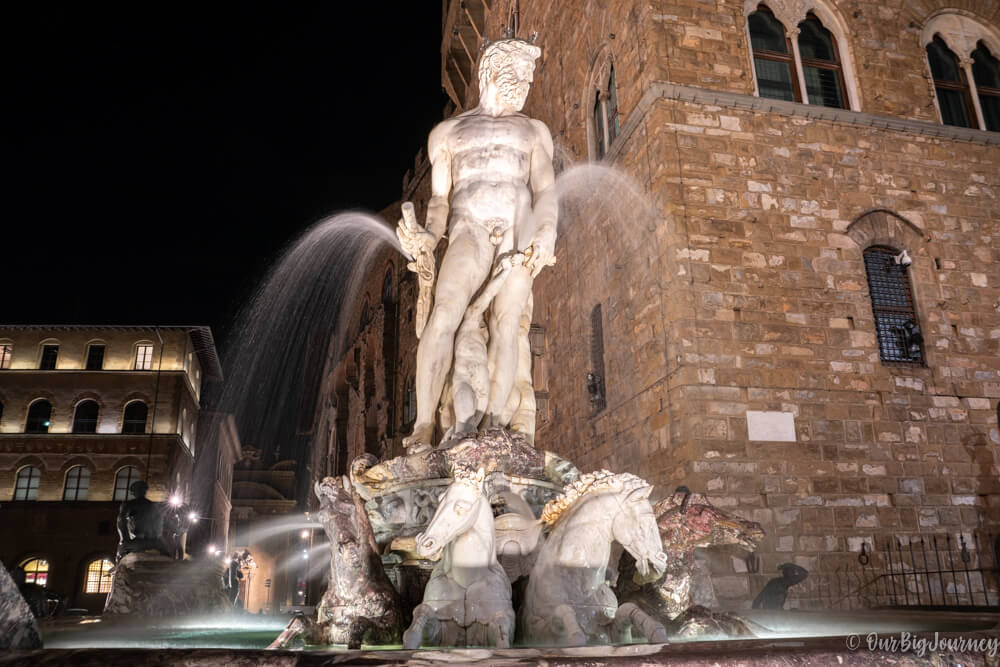
This post highlights what not to miss in Florence, whether it is your first visit, second, or third! It is a city that you can go back to multiple times, and not have seen it all. Later posts will feature A Weekend in Florence, where I will share more tips on visiting the city, and another will be dedicated to food. Look forward to those coming posts!
Let’s get into some of my top recommendations for what not to miss in Florence.
Table of Contents
The Duomo
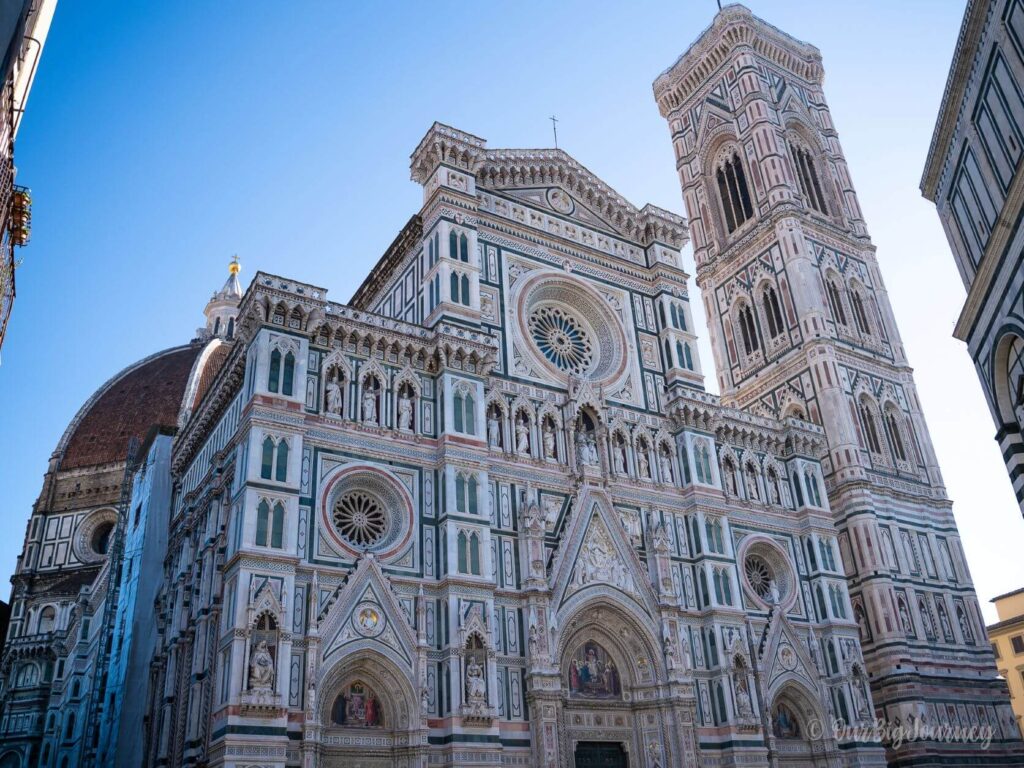
Probably one of the most famous sites in Florence, and perhaps even one of the most famous of Italy, is Florence’s Duomo. It is usually found on most what not to miss in Florence lists. The cathedral’s formal name is Cattedrale di Santa Maria del Fiore, and it is right in the middle of the city center in the Piazza del Duomo. Construction of the Duomo started in 1296 and was completed in 1436. It is an architectural masterpiece ahead of its time. The dome itself was completed with ground-breaking architecture and engineering by Filippo Brunelleschi. You can enter inside the 3 parts of the cathedral complex – the basilica, the Baptistery, and Giotto’s Campanile (bell tower). Else, you can marvel at them from the outside, which is breathtaking on its own.
Climb Brunelleschi’s Dome
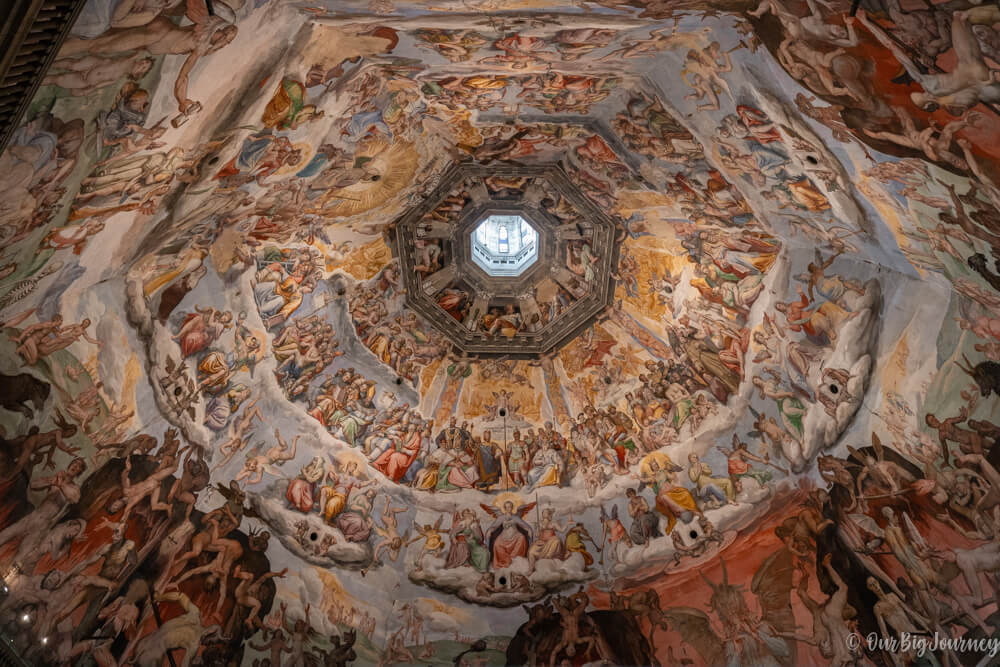
As mentioned above, the dome of the Duomo was designed by Brunelleschi using techniques that were new at the time. The ceiling is painted with an impressive fresco of the Last Judgement , which took from 1572-1579 to complete. It is one of the largest frescos in the world, covering 3,600 metres² (38 750 ft²) of painted surface. Those who are able to can climb up 463 steps to get a closer look at the fresco and then outside to take in sweeping views of the city.
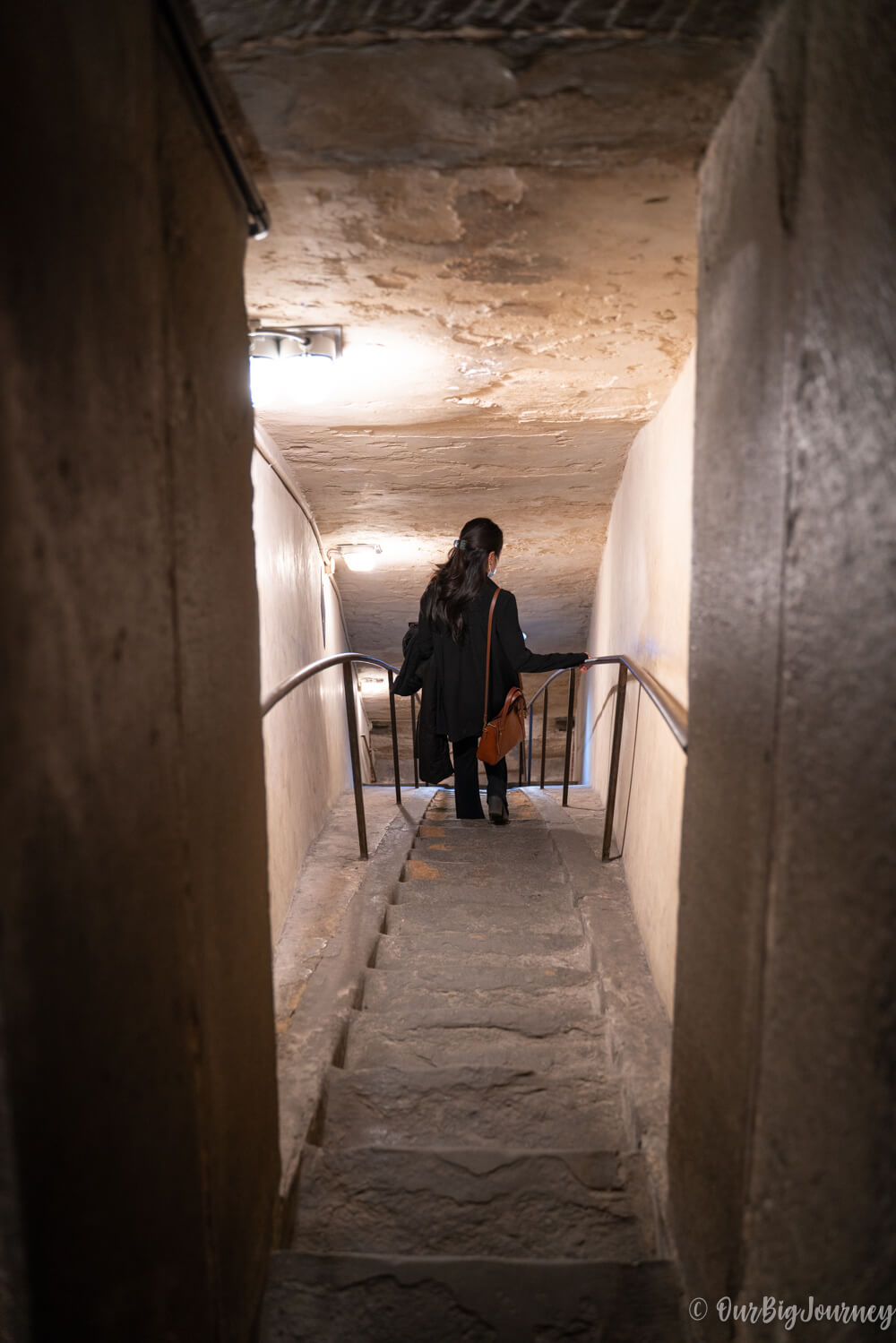
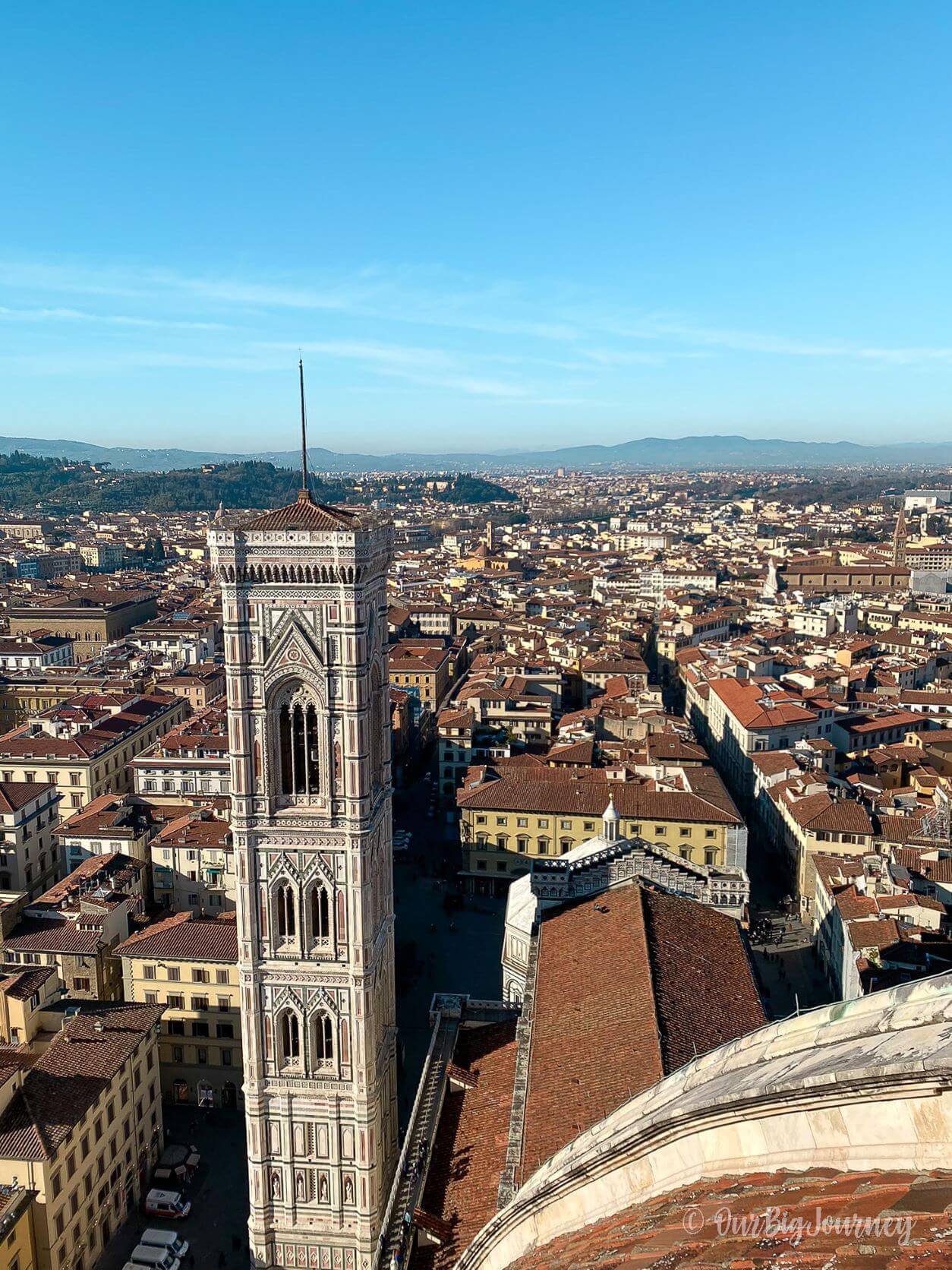
If you have the energy and time, you can also climb up Giottos’ Campanile (bell tower) for views of the Dome and city. Visit the official site for ticket information on entering the different parts of the Duomo here.
Uffizi Gallery
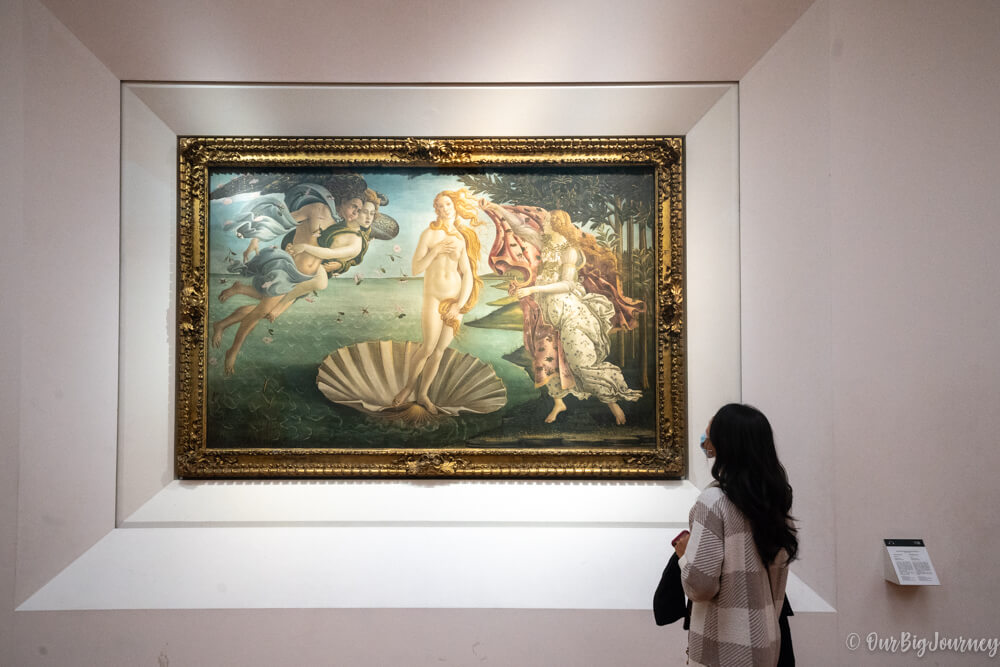
The Uffizi Gallery is one of the oldest in Europe, and has what some people say, the most beautiful art collection in the world. Art enthusiast or not, I would say it is a must-visit on one of your trips to Florence and should definitely go on your what not to miss in Florence list. It has art pieces from some of the most famous and influential artists of all time like Botticelli, Leonardo da Vinci, Michelangelo, Caravaggio and more.
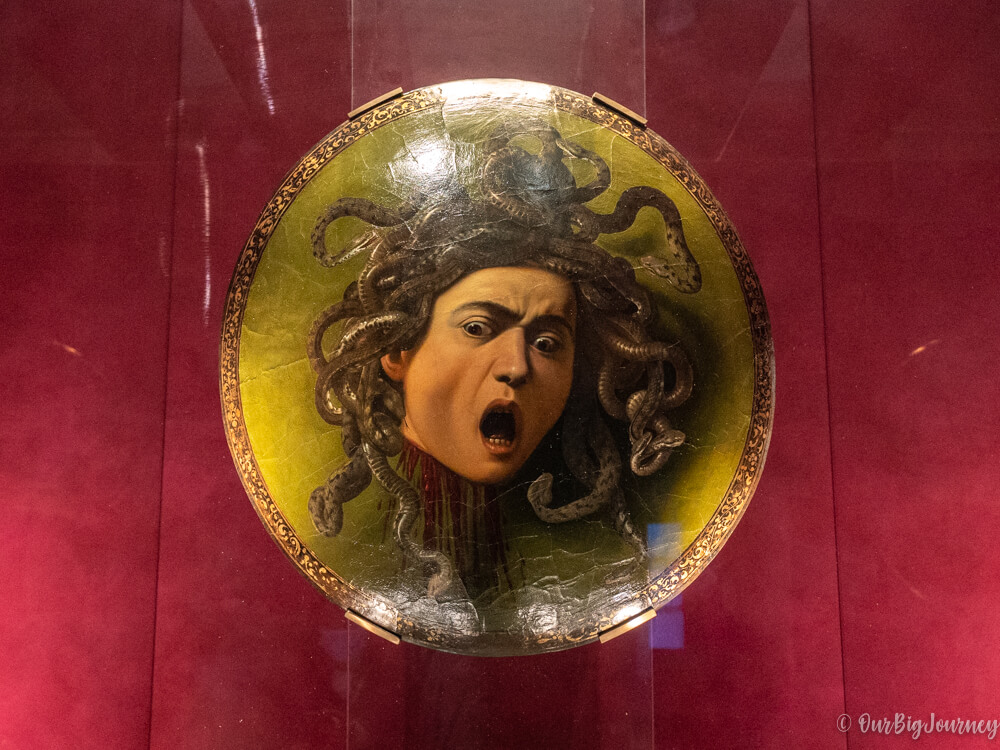
“Uffizi” means “offices” and the building was orignially built for the administrative and legal offices of Florence in 1560-1580 by the order of Grand Duke Cosimo I de Medici. Little by little, the Medici family started to store their own private gallery of statues, paintings, and other valuable objects in a wing of the offices. The family collected treasures over centuries, which are now displayed to the public as we know today in the Uffizi. We recommend planning to spend around 3 hours at least, and you likely won’t see everything within those 3 hours. You may have to come back on your next visit to Florence to see the rest!
Tips: buy your tickets online in advance here, and have a coffee or wine/beer on the terrace of Uffizi’s cafeteria. You’ll have a nice view of the Palazzo Vecchio!
Palazzo Pitti
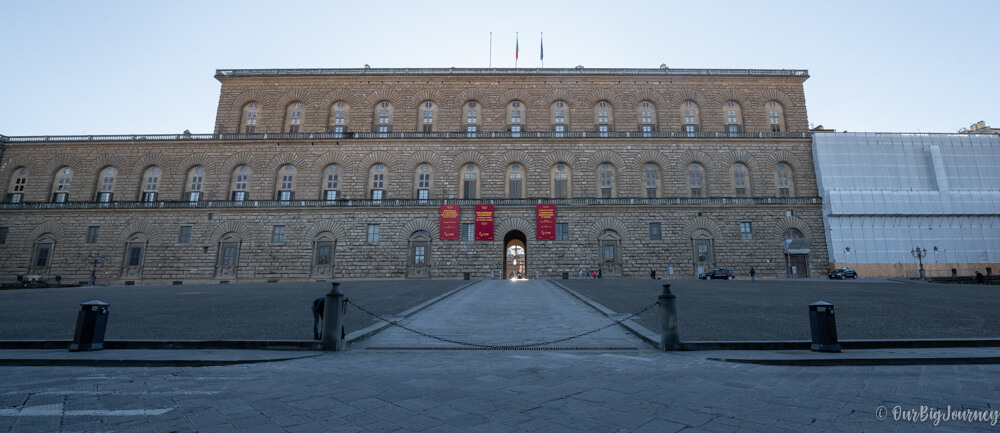
Palazzo Pitti, or the Pitti Palace, was a Renaissance palace in Florence. It was inhabited by three dynasties over four centuries, including the Medici family. However, it is named after a Florentine merchant named Luca Pitti, who had it built as his private residence in the middle of the 15th century. Nowadays the palace houses several museums with important collections of sculptures, paintings, decorative arts, and costumes and fashion. You can combine your visit to the Pitti Palace, with tickets to the Uffizi Gallery here.
Aperitivo
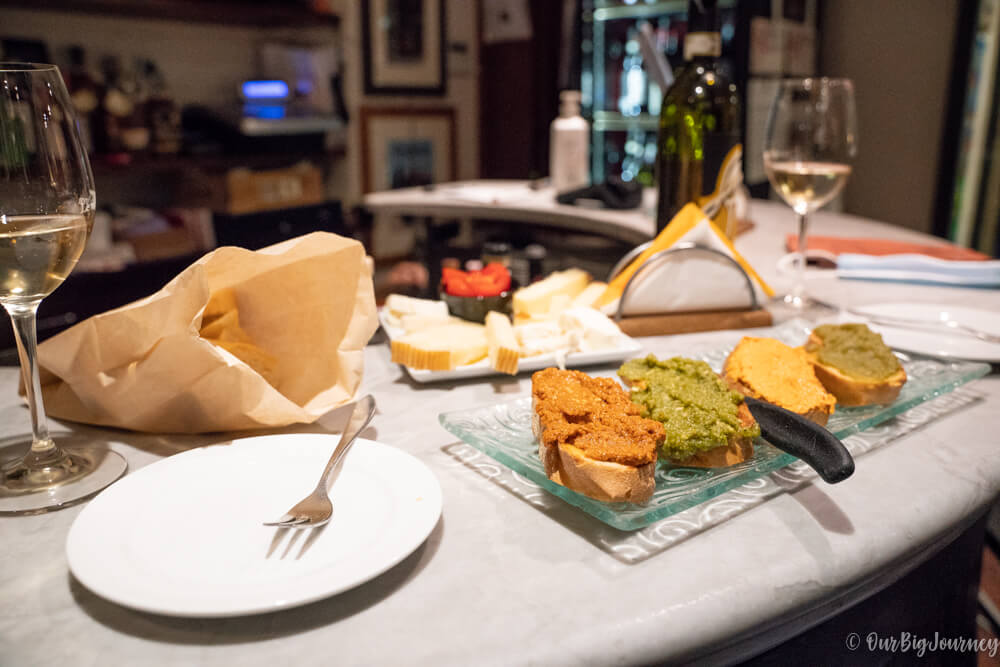
When in Italy, do as the Italians do and enjoy aperitivo! The Italian word “aperto” means “to open” so it’s like opening your appetite (preparing for your meal). Aperitivo is a drink with snacks, to “open the appetite” around 6-8pm before Italian dinner time (8-10pm). There’s lots of great places to enjoy aperitivo in Florence, but one highly recommended place we went to is La Volpi e l’Uva. It’s a lovely wine bar near the Ponte Vecchio, with a wide range of wines to choose from, and delicious snacks for your aperitivo.
Piazza della Signoria
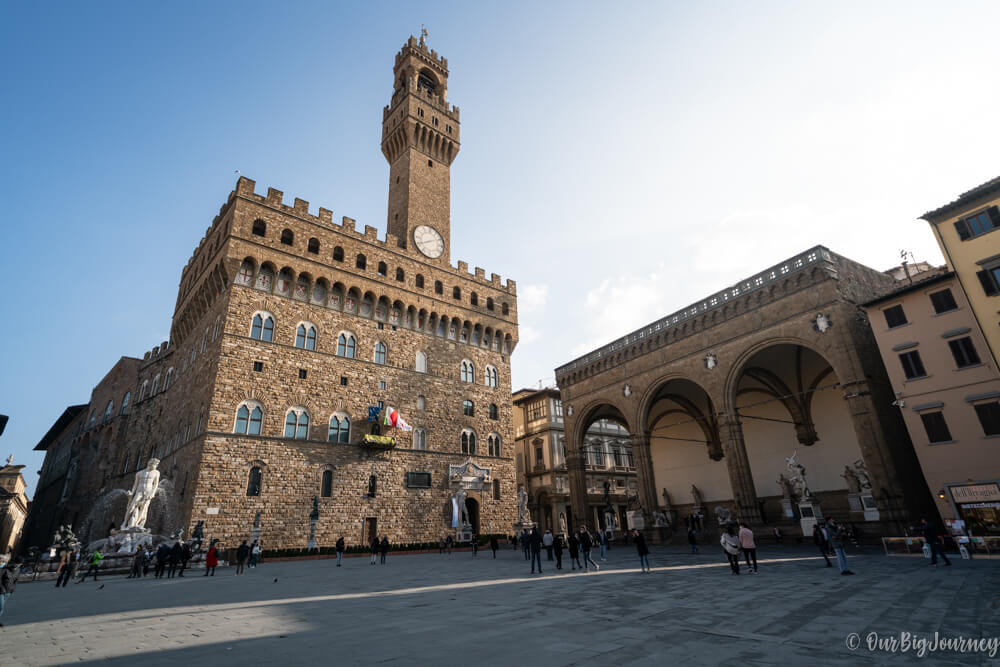
Piazza della Signoria is one of the main piazzas in Florence. The Piazza del Duomo can be considered the city’s religious center, and the Piazza della Signoria is the center of politics and civil power. You can see several historic monuments and buildings in this piazza, including the Palazzo Vecchio. The Palazzo Vecchio is Florence’s town hall, and is the most important historic government building in the city.
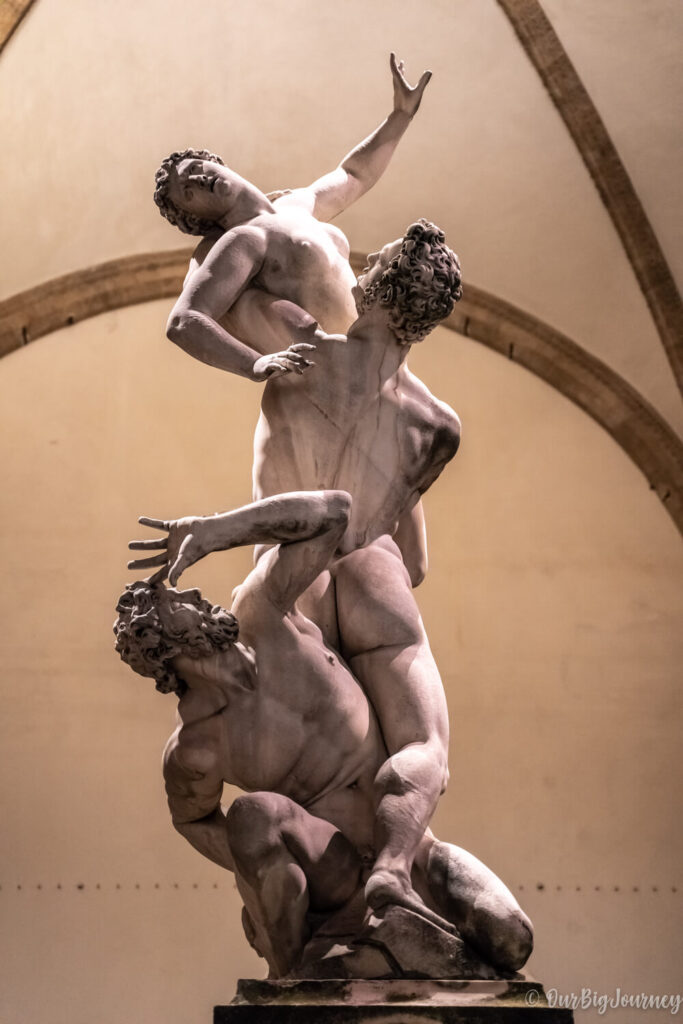
If you’re facing the Palazzo Vecchio, to the right you’ll find a covered open gallery (the Loggia dei Lanzi) housing some famous statues, free for public viewing. This includes the famous statue, Rape of the Sabines, and Cellini’s famous statue of Perseus holding the head of Medusa. It’s a beautiful place to sit and take a break while admiring these masterpieces.
The piazza also features a copy of the Statue of David and the Fountain of Neptune.
Sunset from Piazzale Michelangelo

The Piazzale Michelangelo is one of the best and well-known places to see a sunset over Florence, with the iconic Florentine skyline in view. It does take around 20 minutes (or more) to get to, depending on where you’re coming from. Give yourself enough time so you’re not running up the hill to catch the sunsest (like us).
Ponte Vecchio
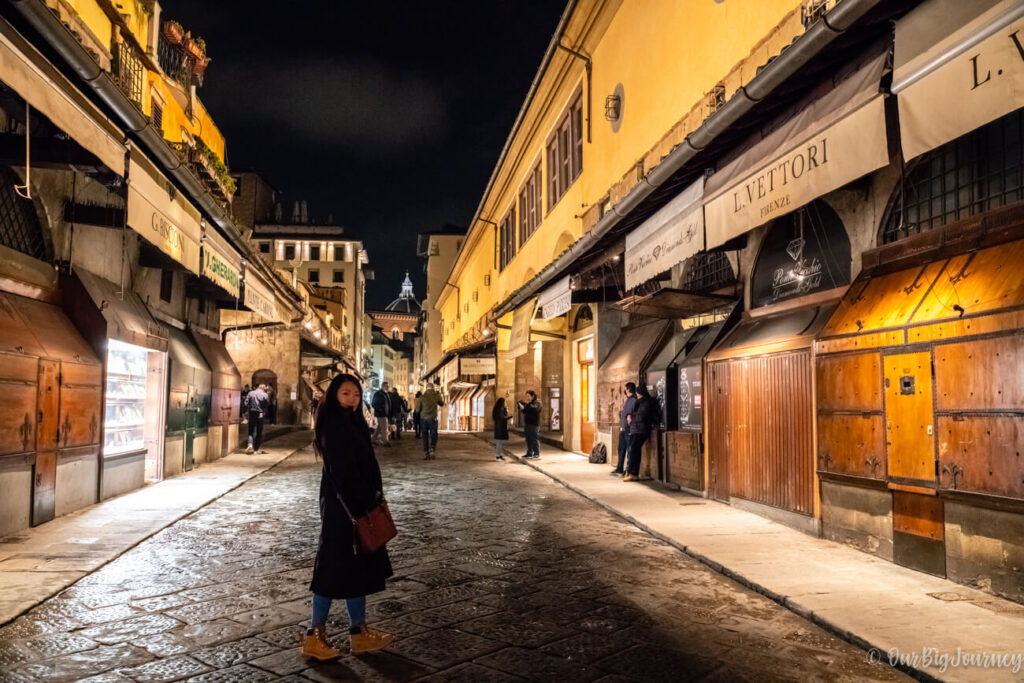
The Ponte Vecchio is the iconic bridge you see a lot in photos of Florence and the Arno river. Ponte Vecchio in its current form was first completed in 1345. The bridge was first built as a defense mechanism for the city but later became a marketplace with meat and fish shops, until the smell was unbearable. The shops were then transformed to jewelery and art shops, which is what you can see there today. In WWII, it was the only bridge crossing the Arno river that the Germans did not destroy.
Basilica di Santa Maria Novella
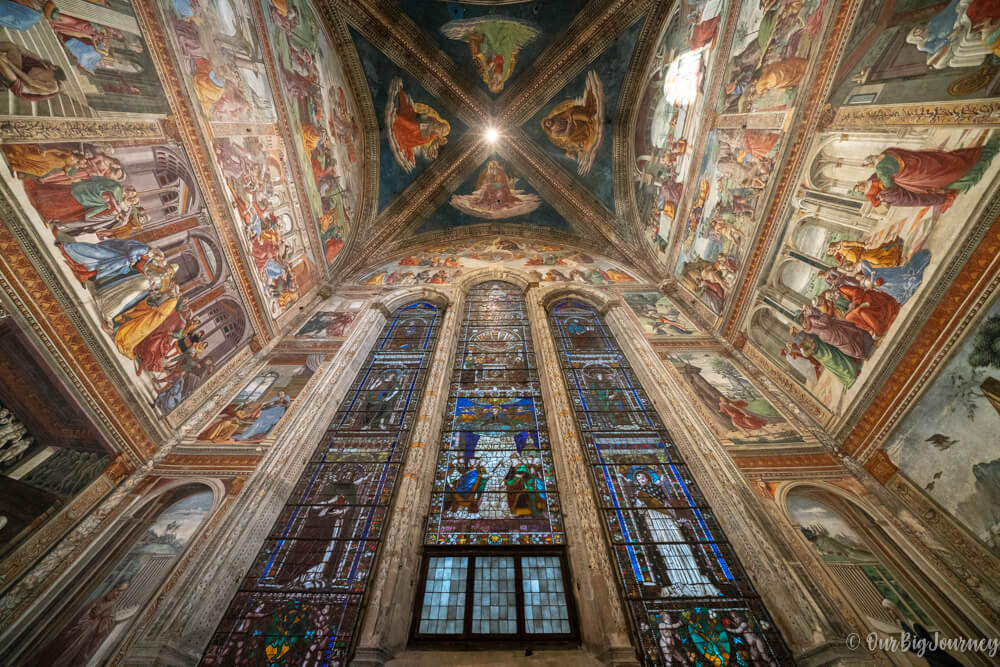
The Basilica di Santa Maria Novella is a beautiful Gothic church near the train station. It was founded by Dominican monks in the first half of the 13th century, becoming an important place of religious and artistic interest. Some consider it the most important Gothic church in Tuscany. The church has also housed many great artworks and frescoes over the centuries. Some have moved to the Uffizi to be preserved. Visit here for updates on visiting times and tickets.
Basilica di Santa Croce
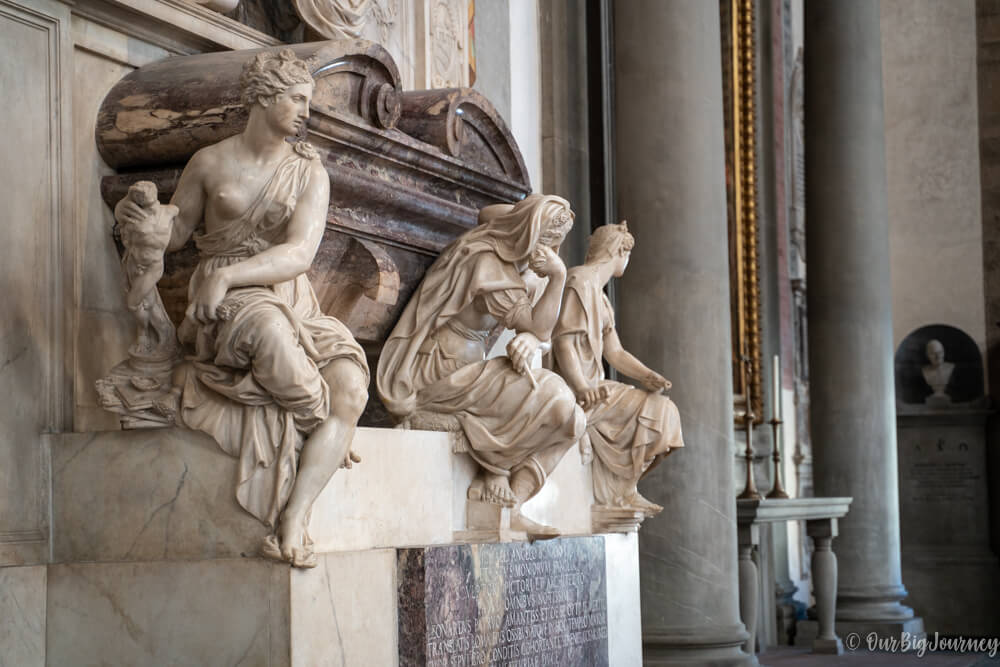
Santa Croce is the largest Franciscan church in the world. Like many other historical sites in Florence, you can see a collision of both religious history and art here. The church houses over 4,000 pieces of art from over centuries. Equally (or more) noteworthy, Santa Croce is the place of rest for some great Italians such as Michelangelo, Dante, Galileo, and more.
Take a Pasta Making Class
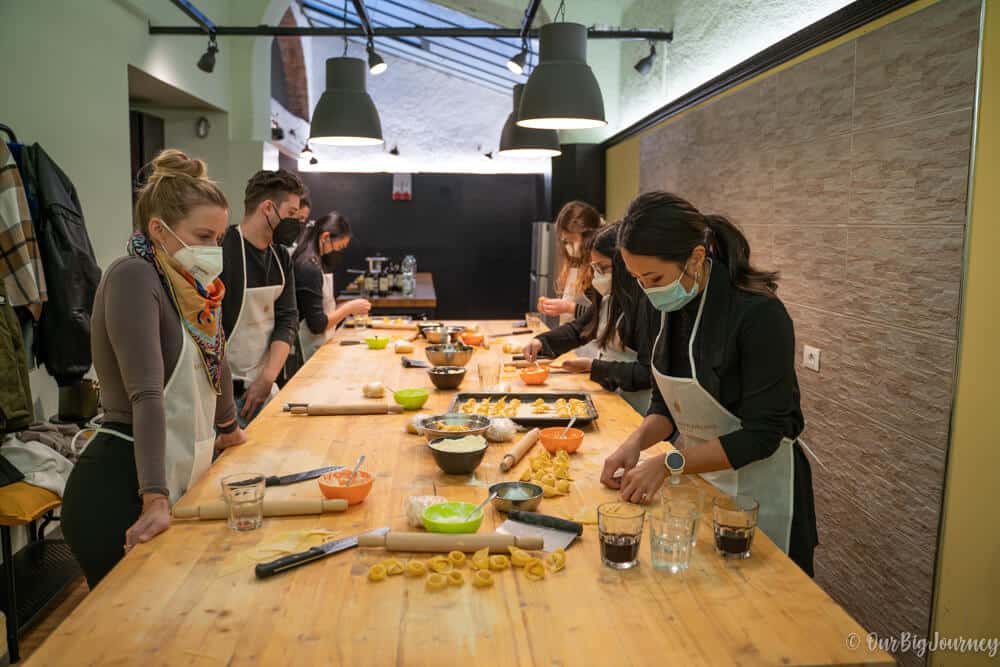
If you love pasta like us, a fun thing to do is to take a pasta making class with a local Florentine. There are several options in the city center, and we chose the Pasta Class Florence. It was an amazing 3-hour experience where we learned how to make fresh pasta, and 3-4 delicious sauces. Marco, our instructor, gave us clear directions and made the class very enjoyable. At the end of the class, we got to try our pasta with 4 different sauces and each was delicious! We left with full bellies and with recipes and knowledge to take home with us. They have just opened a new restaurant in Florence, Diverso, which we will be sure to visit when we go back some day!
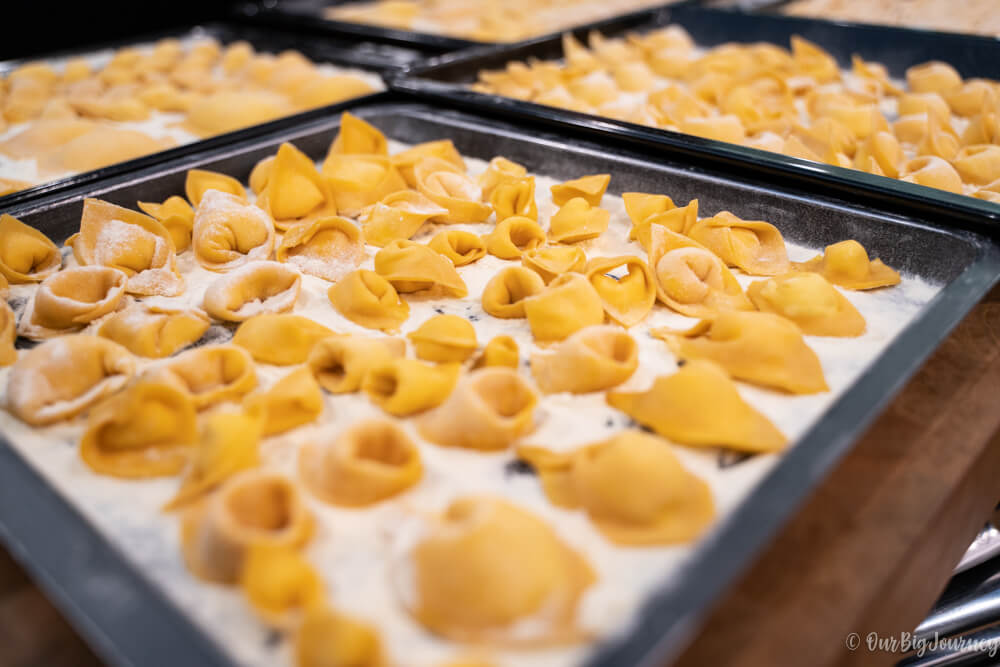
Florence is an incredible city, bursting with history and art. One visit, and you’ll know why it is considered the Renaissance capital of the world. We hope this post gave you some ideas of what not to miss in Florence. If you are looking for other ideas for traveling in Europe in 2022, check out some of our other posts below.
Travel Europe in 2022 recommendations
